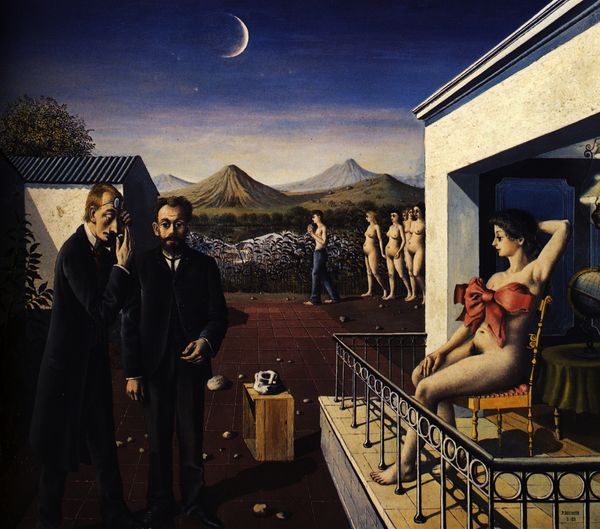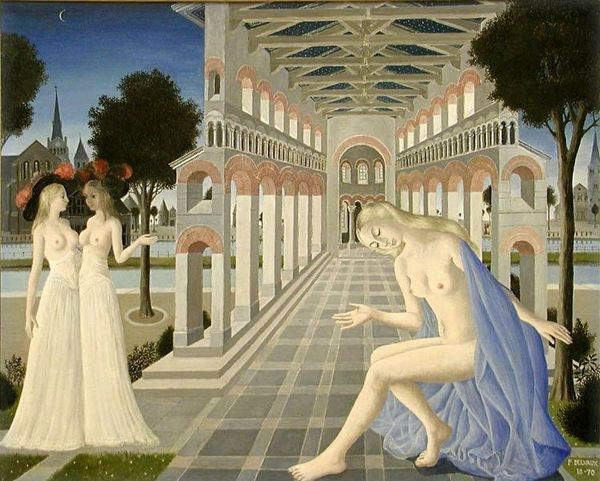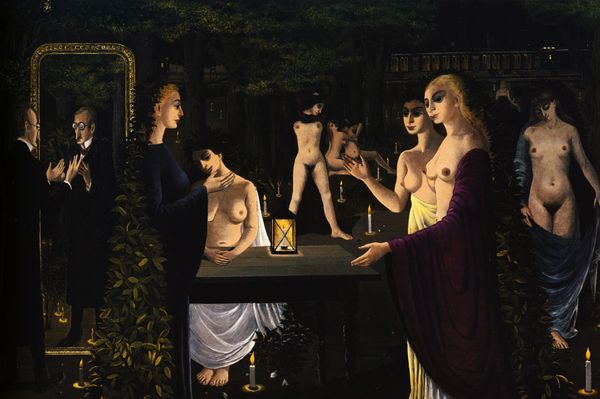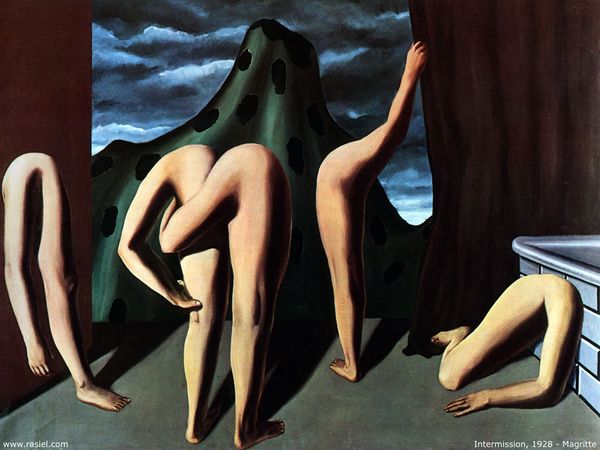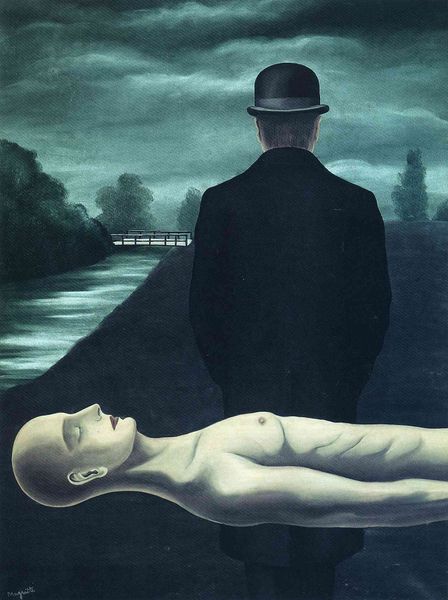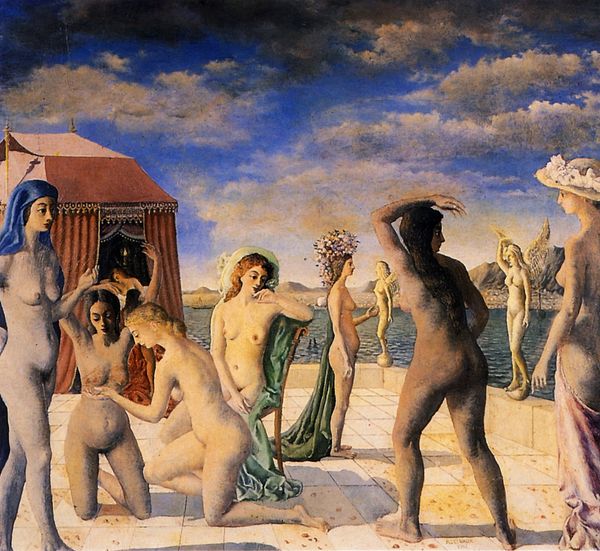
painting, oil-paint
#
portrait
#
painting
#
oil-paint
#
landscape
#
figuration
#
cityscape
#
nude
#
surrealism
Copyright: Paul Delvaux,Fair Use
Curator: This is "The girls from the provinces," a 1962 oil on canvas by Paul Delvaux. It's quite a striking image. Editor: Yes, a haunting stillness pervades. The eerie juxtaposition of nude figures with formally dressed men creates a palpable sense of disquiet and perhaps suppressed desire. Curator: Indeed. Delvaux masterfully arranges the composition using a rigid, orthogonal perspective. Note how the receding cobblestone path and the rows of trees guide the eye deeper into the canvas, almost like a stage. The meticulous linearity contrasts sharply with the softness of the figures' forms. Editor: The recurring motif of doubling strikes me, and may hold a clue. We see not only two girls, but two men. There is a mirrored aspect of a woman seated at the table with a lamp as well as windows in the red-brick building at the far right. This could express suppressed identities or even a repressed self/id conflict. Curator: An astute observation! Consider also the careful distribution of light and shadow. Delvaux bathes the foreground figures in an even, almost theatrical light, while the background dissolves into a hazy obscurity. This directs our focus to the immediate drama unfolding. Editor: The urban architecture in the scene hints at classicism; for instance, the bare-chested figure seated at a table beneath a lamp summons memories of classical philosophers, a symbol of an older civilization. Delvaux repeats a symbol of modernism or capitalism: one or two individuals can be observed going about their activities within the factory, the buildings topped with chimneys. The composition feels almost dreamlike, reflecting on what has come and what will come in terms of socio-cultural movements. Curator: A persuasive analysis. Delvaux’s work often exists within that liminal space, blurring the boundaries between the real and the surreal, invoking feelings of alienation and melancholic introspection. Editor: I concur. This picture appears to present not so much a portrait of two "girls" as an allegory about the shifting historical identity of the provinces that connect a historic cultural landscape with a burgeoning modernity. Curator: Looking closer, a deeper contemplation is prompted, indeed. Thank you. Editor: You're most welcome.
Comments
No comments
Be the first to comment and join the conversation on the ultimate creative platform.
